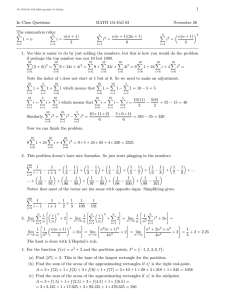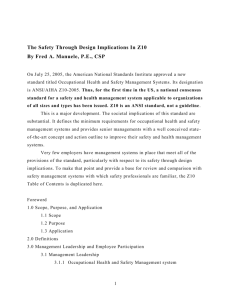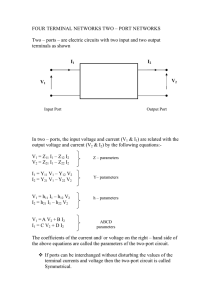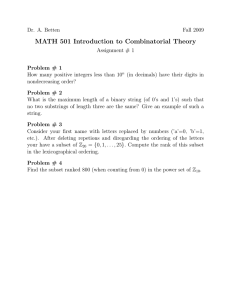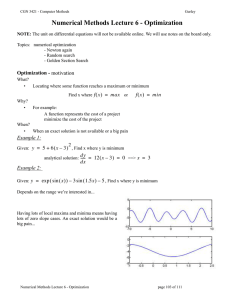advertisement
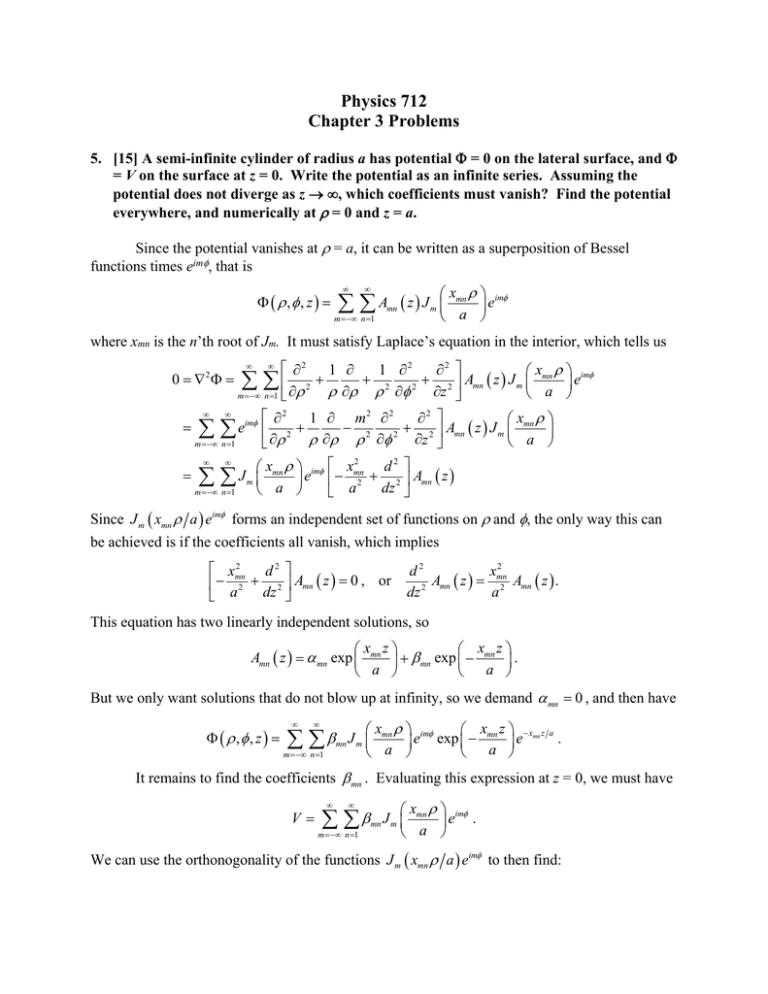
Physics 712 Chapter 3 Problems 5. [15] A semi-infinite cylinder of radius a has potential = 0 on the lateral surface, and = V on the surface at z = 0. Write the potential as an infinite series. Assuming the potential does not diverge as z , which coefficients must vanish? Find the potential everywhere, and numerically at = 0 and z = a. Since the potential vanishes at = a, it can be written as a superposition of Bessel functions times eim, that is , , z A z J m n 1 mn m xmn im e a where xmn is the n’th root of Jm. It must satisfy Laplace’s equation in the interior, which tells us 2 2 1 1 2 xmn im 2 2 2 z 2 Amn z J m a e m n 1 2 2 2 2 1 m x eim 2 2 2 Amn z J m mn 2 z a m n 1 0 2 x J m mn eim a m n 1 2 xmn d2 Amn z 2 dz 2 a Since J m xmn a eim forms an independent set of functions on and , the only way this can be achieved is if the coefficients all vanish, which implies 2 xmn d2 Amn z 0 , or 2 dz 2 a 2 xmn d2 A z Amn z . mn dz 2 a2 This equation has two linearly independent solutions, so x z x z Amn z mn exp mn mn exp mn . a a But we only want solutions that do not blow up at infinity, so we demand mn 0 , and then have , , z m n 1 mn x x z J m mn eim exp mn e xmn z a . a a It remains to find the coefficients mn . Evaluating this expression at z = 0, we must have V m n 1 mn x J m mn eim . a We can use the orthonogonality of the functions J m xmn a eim to then find: mn 2 a a 2V m 0 1 2 xmn x im e d VJ d J 0 0n d 2 2 m 2 2 0 0 0 a J1 x0 n 2 a J m 1 xmn a a x0 n 2V m 0 J 0 y y dy , x02n J12 x0 n 0 where in the last step we made the substitution ay x0 n . You can get Maple to do the integrals numerically, or if you want to be cleverer, you can use the recursion relations J m 1 x m d Jm x Jm x x dx to rewrite the final integral as x0 n 0 J 0 y y dy x0 n 0 x0 n d x0 n 1 d y J1 y dy J1 y y dy 0 dy yJ1 y dy yJ1 y 0 x0 n J1 x0 n . We therefore find 0 n 2V x0 n J1 x0 n . The first several terms can be found in the table at right. The potential is n 0n V 1 1.601974697 2 -1.064799259 2V x0 n x0 n z 3 0.851399193 J0 , , z exp . a a n 1 x0 n J1 x0 n 4 -0.729645240 5 0.648523614 Substituting in z = a and using the fact that J 0 0 1 , we have 6 -0.589542829 7 0.544180196 2Ve x0 n 0, , a 0.1405064065V . 8 -0.507893631 n 1 x0 n J1 x0 n 9 0.478012498 We let Maple do the sum for us. The numerical value was found adding seven terms. > add(2/exp(x)/x/BesselJ(1,x),x=evalf(BesselJZeros(0,1..7)));
